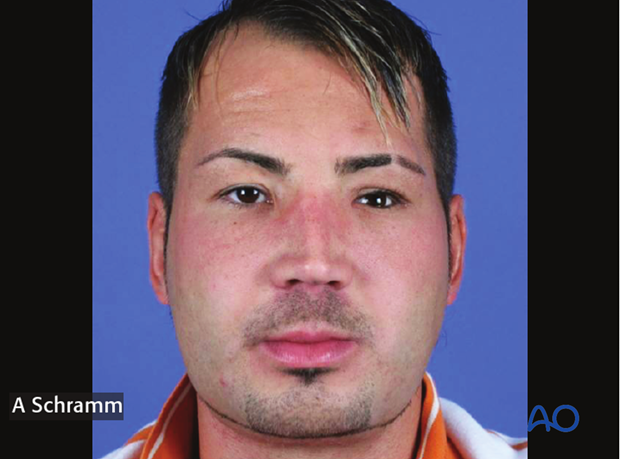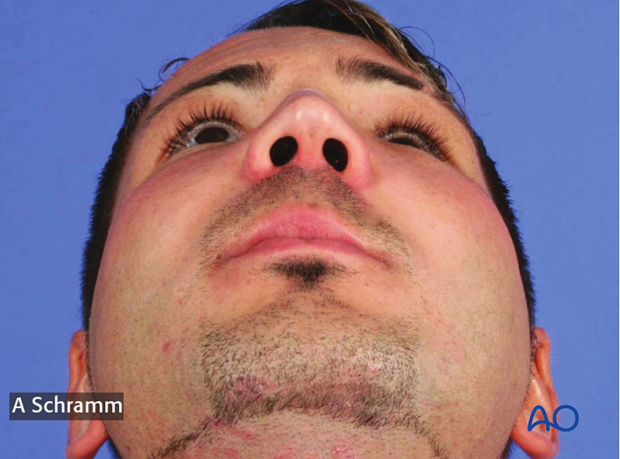Virtual planning and intraoperative navigation - Gunshot
1. Introduction
Indications
Complex facial fractures, especially those that result from ballistic injuries, benefit from virtual planning of the reconstructive procedure and intraoperative navigation.
General considerations about variety and special treatment guides for gunshot injuries are not explained in this section.
In the following we focus on the use of computer assisted surgery to treat gunshot injuries of the facial skeleton.
Gunshot injuries of the facial skeleton often involve multiple functional areas. In the case used to illustrate the principles of the computer assisted surgery, a self-inflicted gunshot caused a complex panfacial fracture with loss of the left globe. The projectile entered submentally and stopped subcutaneously over the left frontal bone as seen in the 3D-CT scan. In the clinical picture, an instrument is inserted into the bullet channel.
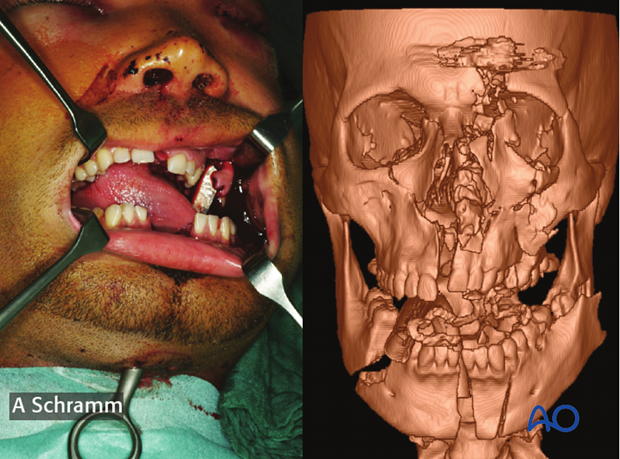
Useful additional reading
2. Preoperative planning
Proper preoperative examination of CT-scans requires multiplanar views consisting of axial, coronal, sagittal, and 3D-reconstruction.
In case intraoperative navigation is needed, titanium screws have to be inserted as fiducial markers into the skull bone or can be fixed to dental splints. Skin fiducials or laser surface scanning in craniofacial trauma are not applicable due to soft tissue changes.
Orientation of the data set
The first step in preoperative planning is correct orientation of the data set to the natural head position.
Segmentation
The second step is segmentation of anatomic regions of interest. Using autosegmentation algorithms, this procedure is performed by the software.
Virtual reduction and reconstruction
Virtual simulation of frontal bone reconstruction and zygoma reduction is performed by mirroring the unaffected side, after auto segmentation or by repositioning the segmented affected bones virtually.
Reconstruction of orbital walls in unilateral trauma is achieved by mirroring the contralateral side. In bilateral cases, virtually bending and shaping of the segmented areas allows virtual orbital reconstruction.
After virtual reconstruction the modified dataset serves as a virtual template that can be used for intraoperative navigation, intraoperative imaging and postoperative quality control.
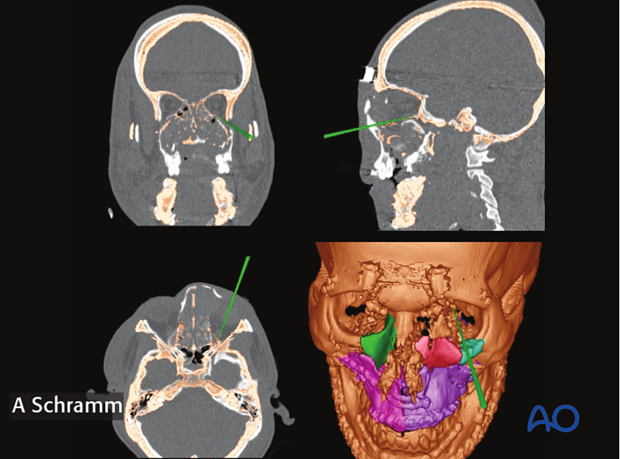
3. Mandibular reconstruction
Because the entire mandibular body is exposed, reduction and reconstructed with locking plates is performed as in a standard trauma case without the use of intraoperative navigation. The reconstructed mandible is then used as a guide for the maxillary reconstruction by establishing the correct occlusion.
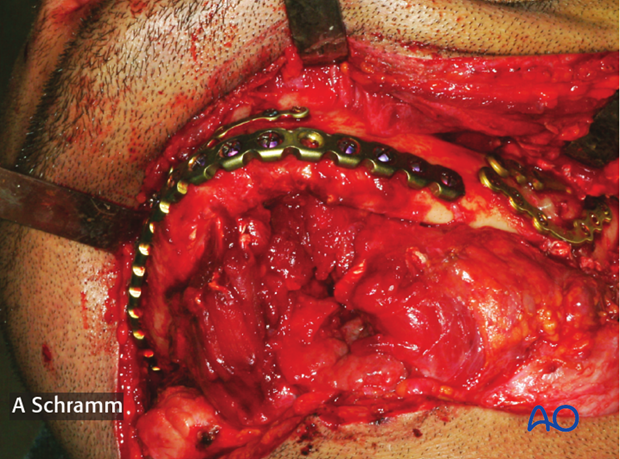
4. Midface and skull reconstruction using Intraoperative navigation
Pointer based infrared navigation provides radiation-free verification of the reduction of the displaced zygoma according to the virtual template created during the planning.
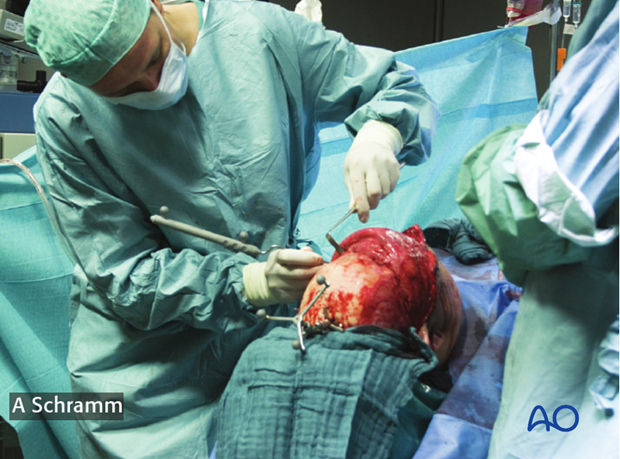
After the repositioning of bony segments (using standard techniques described in the trauma section), the tip of the pointer is placed on the surface on each segment to correlate its actual position with the contours of the virtual template.
This procedure has to be repeated after any changes in the position of the segments.
Stable internal fixation is applied following correct positioning. This is performed as described in the trauma section.
When the buttresses of the midface have been restored, the maxilla is reconstructed guided by the mandibular occlusion.
Tracking of patients head is achieved with a dynamic reference frame (DRF) attached to the cranial bone. Alternatively the DRF can be attached to a Mayfield clamp.
The pointer is placed on the surface of the titanium mesh at the medial wall of the left orbit to correlate mesh position and virtual reconstruction with infrared navigation.
This procedure has to be repeated after any changes of mesh position.
The stable fixation of the mesh follows confirmation of correct position. This is performed as described in the trauma secttion.

Reconstruction of the supraorbital rim and the frontal bone is performed with a 3D-titanium mesh. The bony fragments of the anterior wall of the frontal sinus are fixed with mini-screws to the titanium mesh. Positioning and shape is guided by intraoperative navigation as described above for orbital wall reconstruction. Medial canthopexy is performed using a barb wire fixed to the titanium mesh as described in the trauma section.
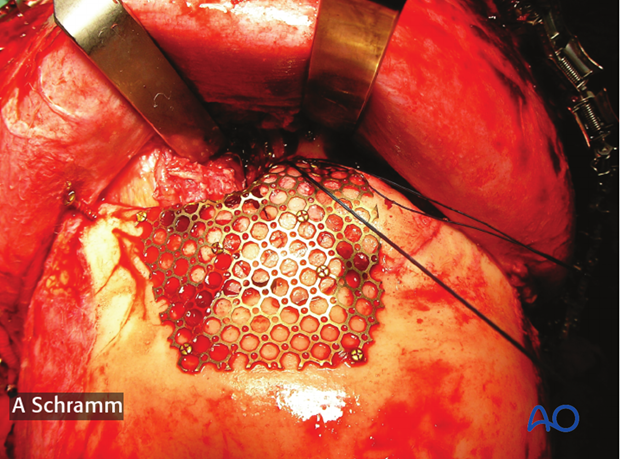
5. Postoperative control
After fusion of the virtual plan and postoperative CT-scan, the quality of reconstruction can be assessed.
In this postoperative quality control, anatomically correct shaping and positioning of the titanium mesh used for the reconstruction of the orbital floor and medial wall can be seen in the left orbit. Similarly the reconstruction of the frontal bone and the supraorbital rim can be assessed.
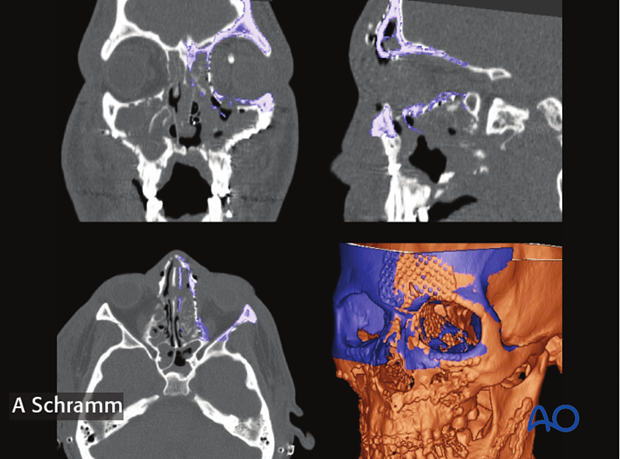
The comparison of pre- and postoperative 3D-reconstruction of the postoperative CT-scan gives an overview of the panfacial reduction and reconstruction. Symmetry of the facial buttresses and outer contours can be verified in the frontal view and...
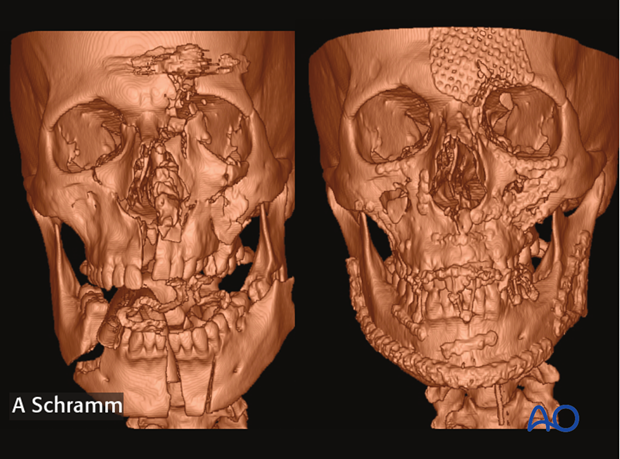
... lateral view
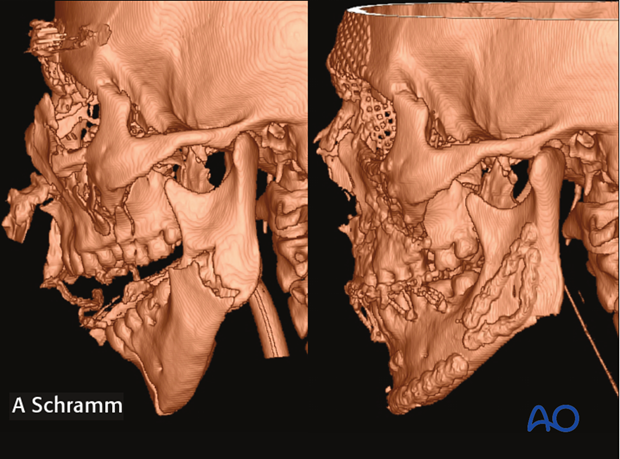
The clinical pictures show the patient 1 year after primary panfacial reconstruction and prosthetic reconstruction of the left globe.
